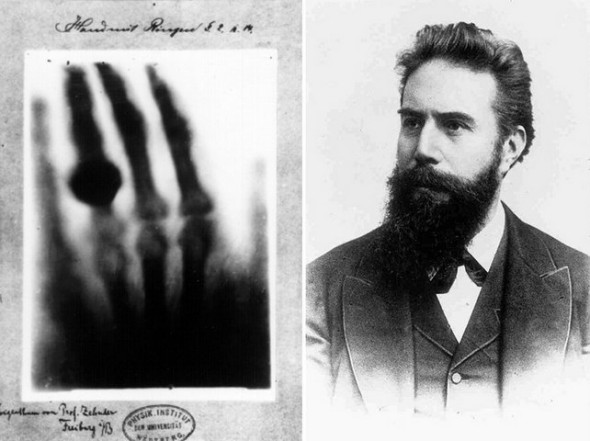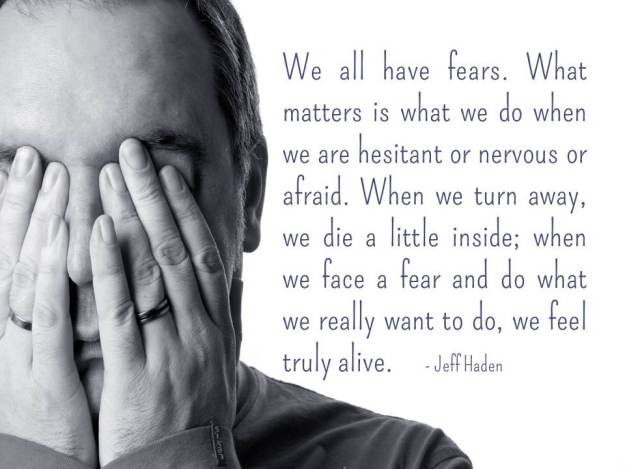What would it take to see something behind the veil of physical matter, hidden with the surprises and inner beauty?
Technology came a long way, what is used to be just for the medical uses become an Art.
Of course as everything it has a beginning, it all started by German physicist Wilhelm Röntgen who discover of X-rays in 1895, he was the first to systematically study them, though he is not the first to have observed their effects. He is also the one who gave them the name "X-rays", though many referred to these as "Röntgen rays" (and the associated X-ray radiograms as, "Röntgenograms")
Technology came a long way, what is used to be just for the medical uses become an Art.
Of course as everything it has a beginning, it all started by German physicist Wilhelm Röntgen who discover of X-rays in 1895, he was the first to systematically study them, though he is not the first to have observed their effects. He is also the one who gave them the name "X-rays", though many referred to these as "Röntgen rays" (and the associated X-ray radiograms as, "Röntgenograms")
Röntgen discovered its medical use when he made a picture of his wife's hand on a photographic plate formed due to X-rays. The photograph of his wife's hand was the first photograph of a human body part using X-rays. When she saw the picture, she said "I have seen my death."
The first ever X-Ray photograph of a human body part was taken on 22 December 1895, about one week prior to Röntgen's meeting with Zehnder. Hand mit Ringen had revolutionized the way medical prognosis is done, but Röntgen's photograph was not only a major milestone in the history of medicine. Hand mit Ringen was also the first step towards X-Ray as a unique genre of artistic photography. – Who knew?
The first ever X-Ray photograph of a human body part was taken on 22 December 1895, about one week prior to Röntgen's meeting with Zehnder. Hand mit Ringen had revolutionized the way medical prognosis is done, but Röntgen's photograph was not only a major milestone in the history of medicine. Hand mit Ringen was also the first step towards X-Ray as a unique genre of artistic photography. – Who knew?
Bryan Whitney: Incredible X-Ray Art
http://www.x-rayphotography.com
Bryan Whitney - His X-ray images of nature and ordinary, even iconic, items have caught the attention of art and science lovers around the world.
Although Whitney’s artwork is considered photography, he doesn’t use a camera. Instead, Whitney uses an X-ray machine beam to penetrate the chosen object. This process creates an image of the item’s inner structure on a digital plate or sheet of film (similar to how it is done at the doctor’s office). Whitney then digitally adjusts and often colors the black-and-white image to create his final, unique work of art.
http://www.x-rayphotography.com
Bryan Whitney - His X-ray images of nature and ordinary, even iconic, items have caught the attention of art and science lovers around the world.
Although Whitney’s artwork is considered photography, he doesn’t use a camera. Instead, Whitney uses an X-ray machine beam to penetrate the chosen object. This process creates an image of the item’s inner structure on a digital plate or sheet of film (similar to how it is done at the doctor’s office). Whitney then digitally adjusts and often colors the black-and-white image to create his final, unique work of art.
Hugh Turvey’s X-ray Art
http://oddstuffmagazine.com/coloured-x-rays-of-flowers-turning-x-ray-into-an-art-by-hugh-turvey.html
Hugh Turvey is fascinated by the idea of X-ray specs, the idea that one can put on an accessory and suddenly see a deeper truth appeals to Turvey and inspires his art. Although Turvey isn’t the first artist to use X-rays as art, he is one of the most well known and respected. He looks inside the things most of us ignore, taking an inside view of the natural world and inspiring a truly delightful sense of wonder.
http://oddstuffmagazine.com/coloured-x-rays-of-flowers-turning-x-ray-into-an-art-by-hugh-turvey.html
Hugh Turvey is fascinated by the idea of X-ray specs, the idea that one can put on an accessory and suddenly see a deeper truth appeals to Turvey and inspires his art. Although Turvey isn’t the first artist to use X-rays as art, he is one of the most well known and respected. He looks inside the things most of us ignore, taking an inside view of the natural world and inspiring a truly delightful sense of wonder.
Nick Veasey: The inside becomes the outside
http://www.nickveasey.com
Nick Veasey's book titled X-Ray: who uses a converted radar station in Kent for a studio, "passes x-rays through the objects he is photographing to create images on special film" and then uses "a 13-foot scanner to turn them into a digital file." As described by Veasey in his book Intro: "Nothing gives me more pleasure than revealing the inner beauty of a subject. The unseen can be seen, the internal elements and workings revealed. The inside becomes the outside".
http://www.nickveasey.com
Nick Veasey's book titled X-Ray: who uses a converted radar station in Kent for a studio, "passes x-rays through the objects he is photographing to create images on special film" and then uses "a 13-foot scanner to turn them into a digital file." As described by Veasey in his book Intro: "Nothing gives me more pleasure than revealing the inner beauty of a subject. The unseen can be seen, the internal elements and workings revealed. The inside becomes the outside".
Bert Myers: Inner Beauty of Nature
http://www.bmyersphoto.com
Bert Myers has always been interested in photography as a medium of art. In the 1980's, while using an X-Ray machine to make images of the very small blood vessels growing into healing wounds (microangiography), Myers had noticed some of the images looked like abstract paintings. "I started to explore the uses of Xray as an art medium, thinking I was one of the first to use such methods. In reality I was not, as Goby, Hall Edward, Dain Tasker, Albert Richards, and William Conklin had preceded me, though I was not aware of that until years later.
http://www.bmyersphoto.com
Bert Myers has always been interested in photography as a medium of art. In the 1980's, while using an X-Ray machine to make images of the very small blood vessels growing into healing wounds (microangiography), Myers had noticed some of the images looked like abstract paintings. "I started to explore the uses of Xray as an art medium, thinking I was one of the first to use such methods. In reality I was not, as Goby, Hall Edward, Dain Tasker, Albert Richards, and William Conklin had preceded me, though I was not aware of that until years later.
Steven N. Meyers: Negatives, Positives, and Solarized
http://www.xray-art.com
According to Steven N. Meyers a flower X-Ray photo specialist, the earliest floral radiographs were created over 70 years ago. "By using x-rays instead of light, an unusual inner vision can be revealed and nature shows us textures, details, and shadows that would otherwise not be seen" writes Meyers in his website. "Visible light is just a small part the electromagnetic spectrum, and falls between x-rays and infrared. My x-ray images are a collection of negatives, positives, and solarized images, solarized being partly negative and partly positive at the same time."
http://www.xray-art.com
According to Steven N. Meyers a flower X-Ray photo specialist, the earliest floral radiographs were created over 70 years ago. "By using x-rays instead of light, an unusual inner vision can be revealed and nature shows us textures, details, and shadows that would otherwise not be seen" writes Meyers in his website. "Visible light is just a small part the electromagnetic spectrum, and falls between x-rays and infrared. My x-ray images are a collection of negatives, positives, and solarized images, solarized being partly negative and partly positive at the same time."

 RSS Feed
RSS Feed





